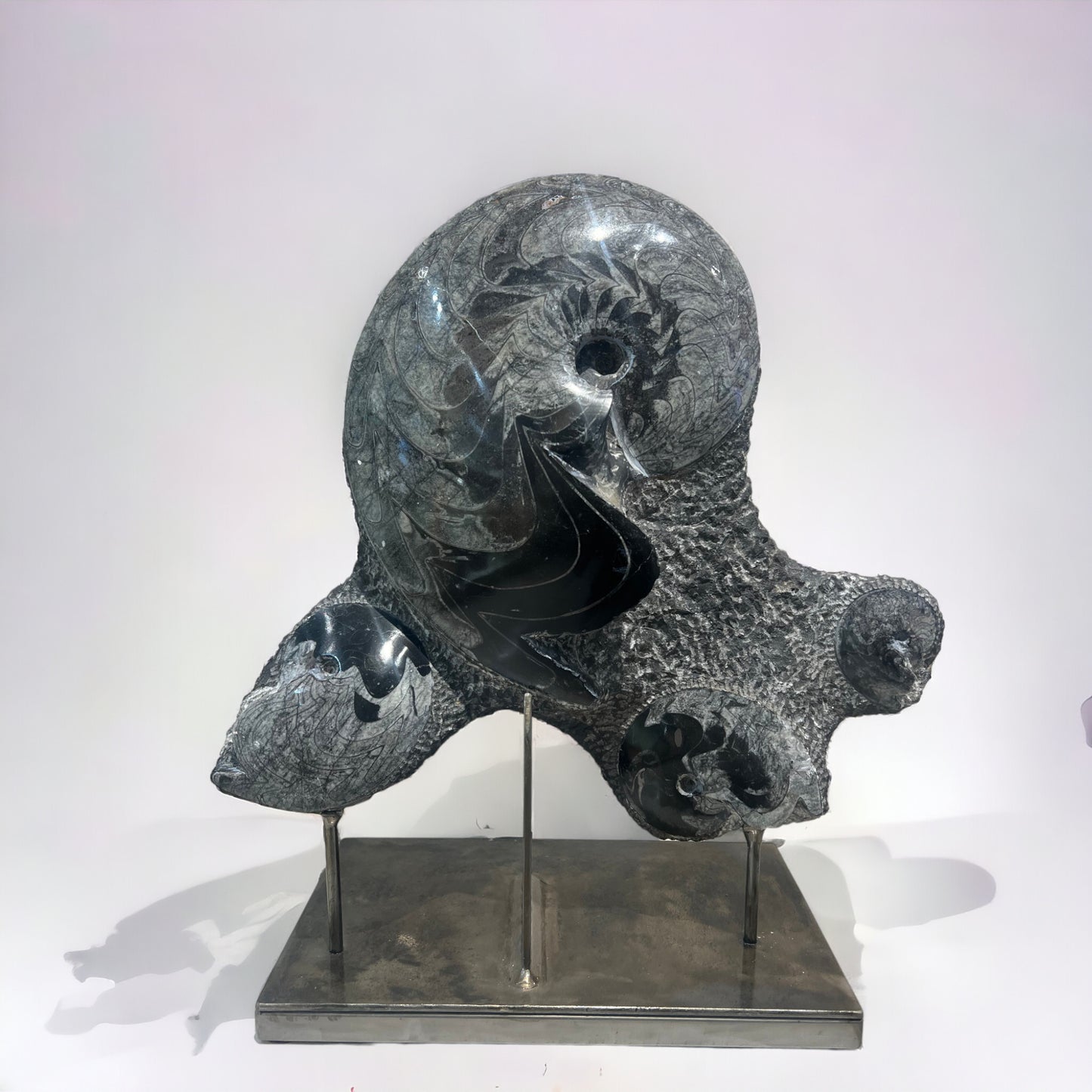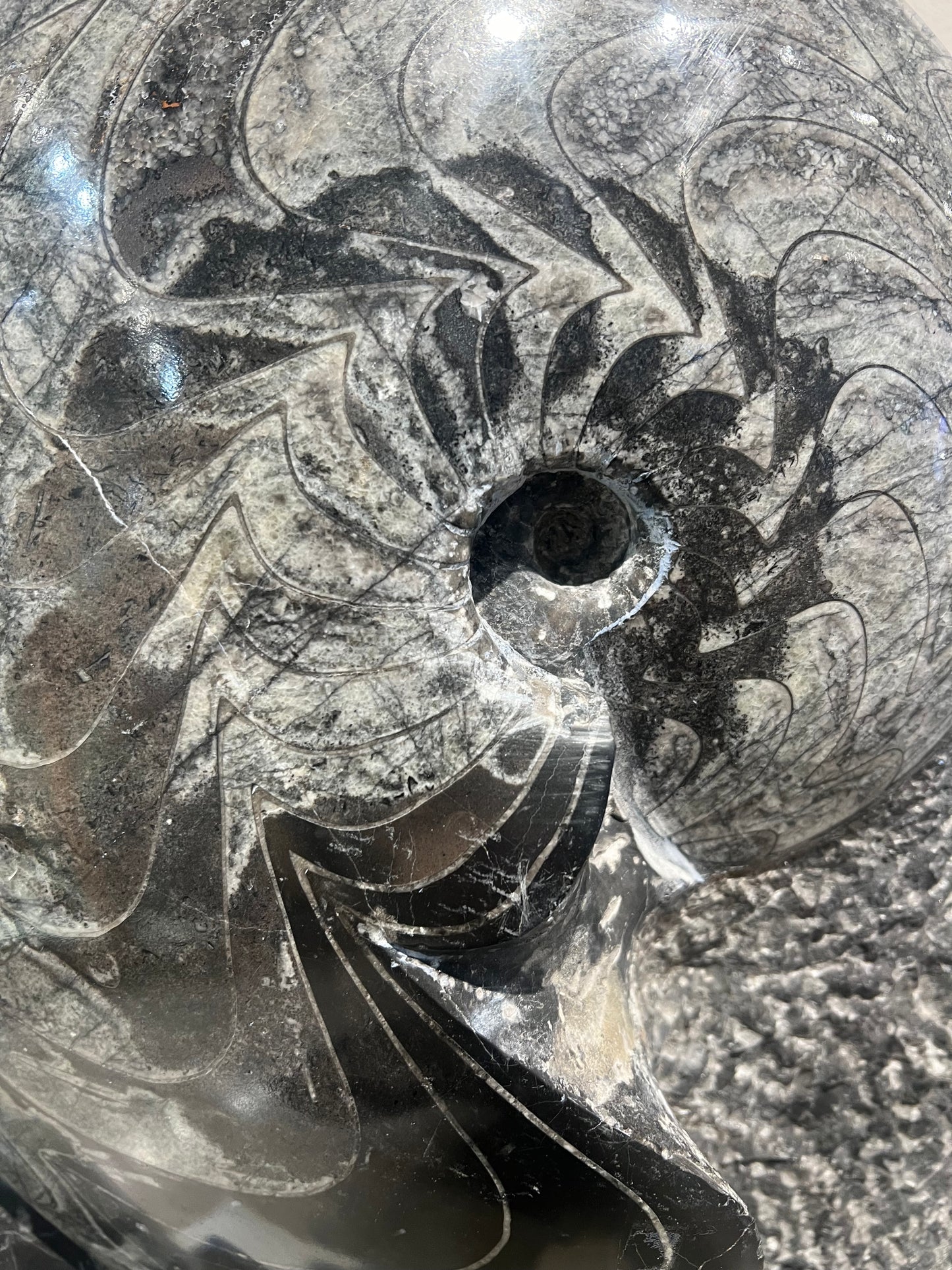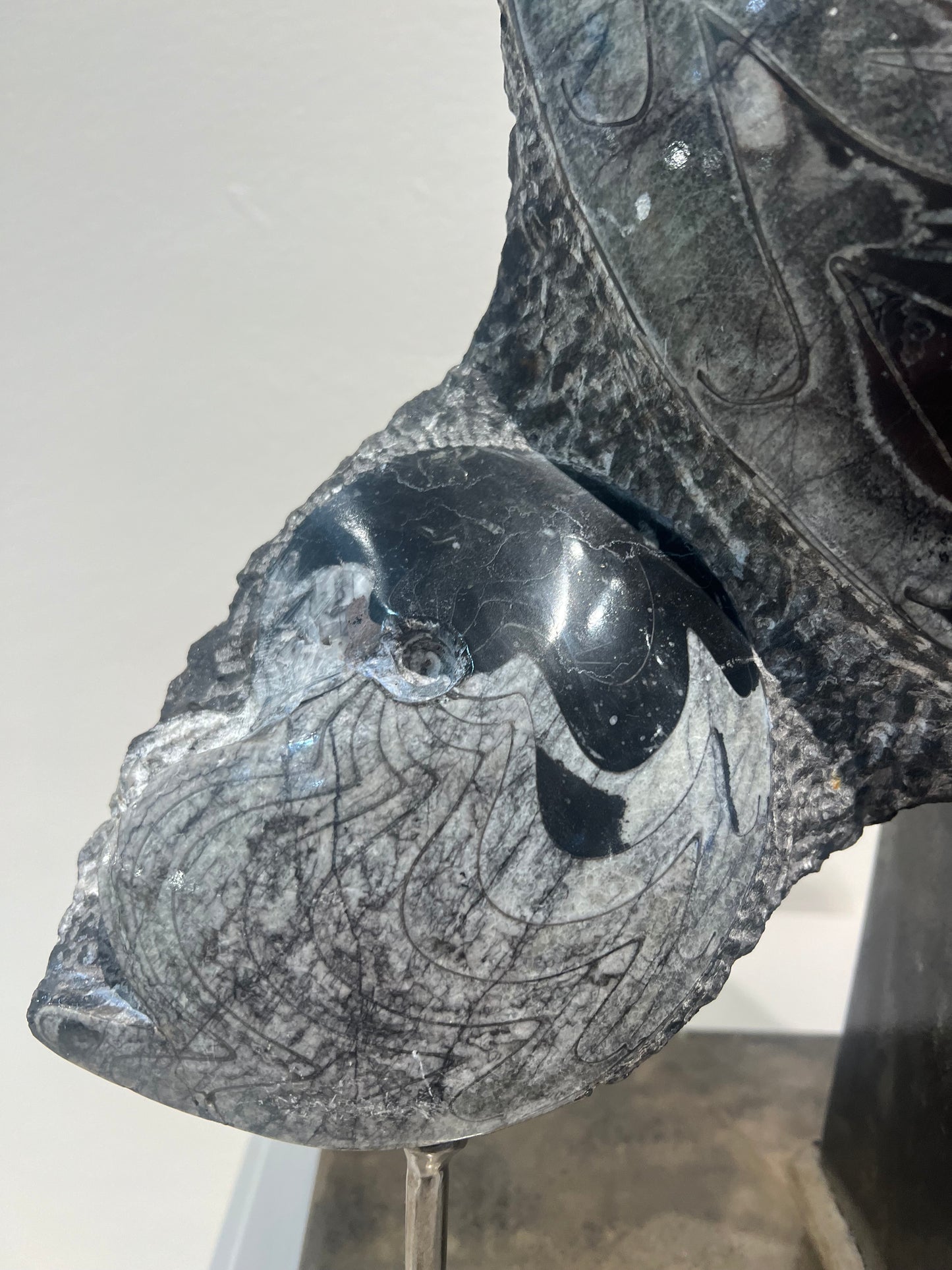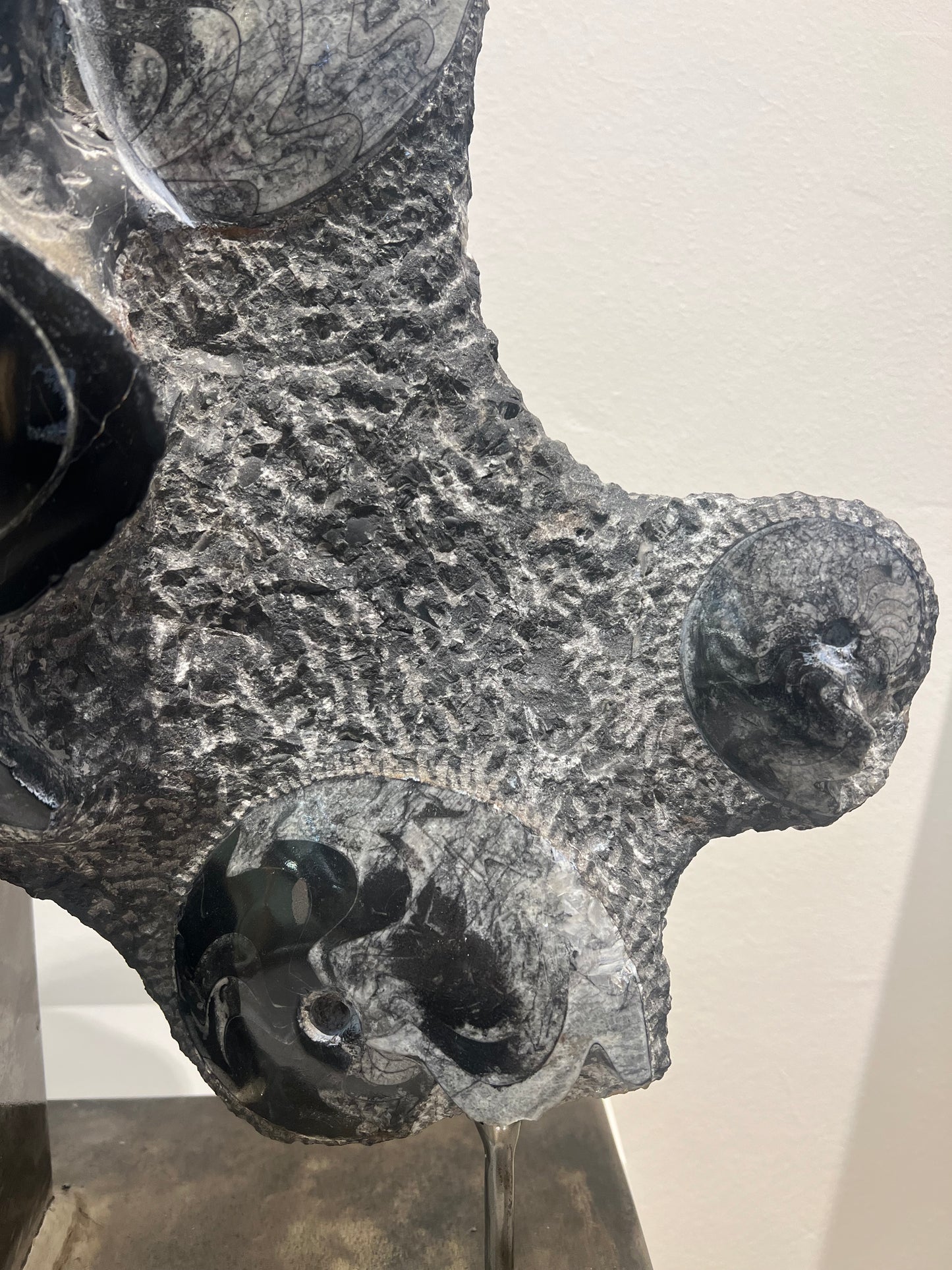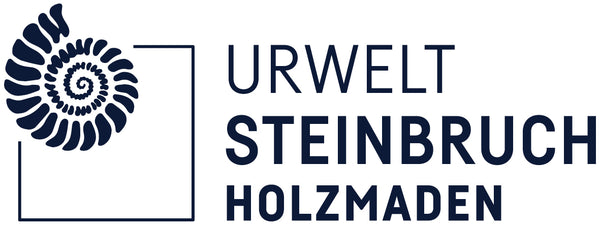Urweltsteinbruch Holzmaden
Goniatites group | Morocco
Goniatites group | Morocco
Regular price
€980,00 EUR
Regular price
Sale price
€980,00 EUR
Unit price
per
Tax included.
Shipping calculated at checkout.
Couldn't load pickup availability
- Origin: Morocco
- Age: Devonian period, ca. 419 to 358 million years ago
- Size: L52cm W46cm D20cm
- Weight: 20kg
- Description: The Goniatites (Goniatitida; from the Greek γωνία = angle, corner, after the bent sutures) are an extinct order of late Paleozoic ammonites (Ammonoidea). In the period of their occurrence between the Devonian and the end of the Permian, they represent the majority of the Ammonoidea.
Goniatites represent a whole series of important index fossils, especially in the Devonian and Carboniferous periods. Before the development of micropaleontological methods, they were part of parastratigraphic structures in many areas, especially in marine limestone sequences.
Like ammonites, goniatites have a chambered shell that is usually spirally wound in one plane and is made up of three layers. It is assumed that the shells of these animals were originally always made of calcium carbonate, known as aragonite. In the fossilized shells, this is often replaced by other minerals such as calcite or pyrite, or these filled a cavity in the sediment that contained the previous shell. The shapes of the shells vary considerably, from spherical to thin, disc-shaped shells, with stocky shapes predominating.
- Additional information: Goniatites were bottom-dwelling marine creatures due to their lifestyle as slow swimmers. They inhabited epicontinental marine areas away from zones with strong water movement such as the surf zones. According to paleogeographic reconstructions, their habitats can be described as subtropical to tropical. Little is known about the diet of the Goniatites.
